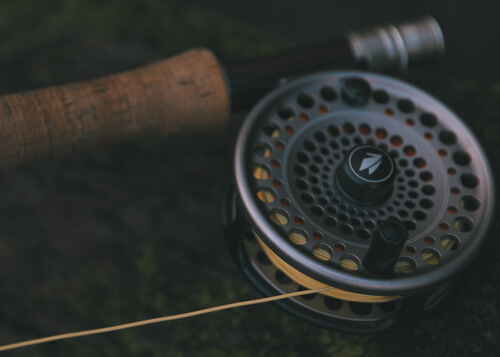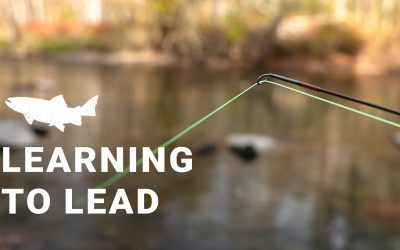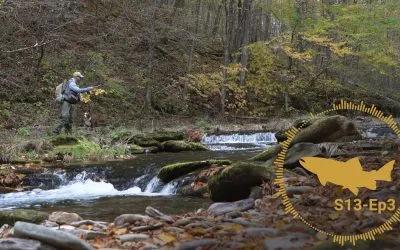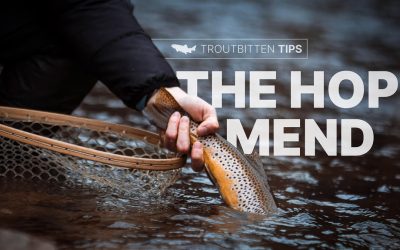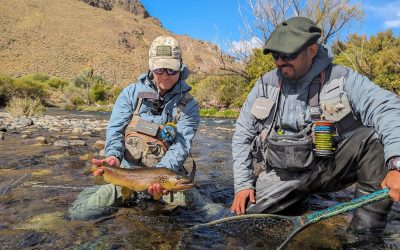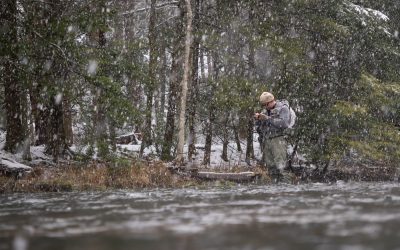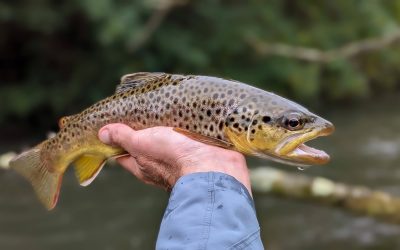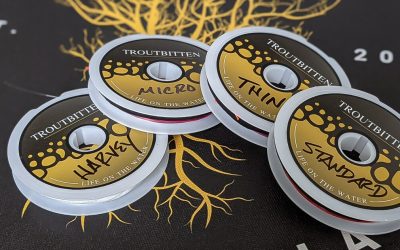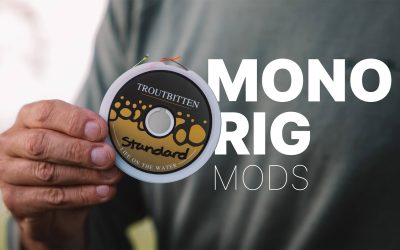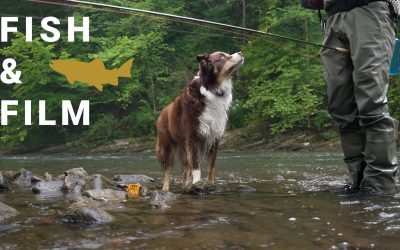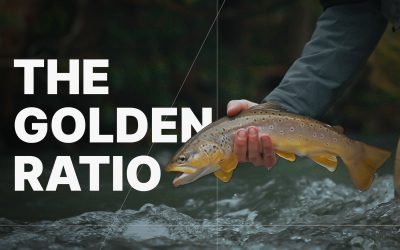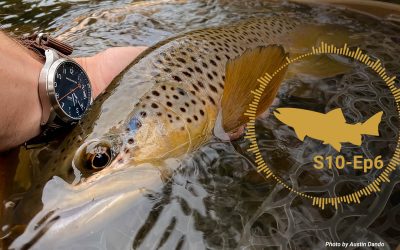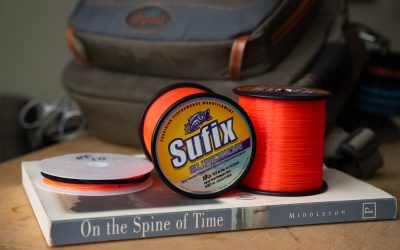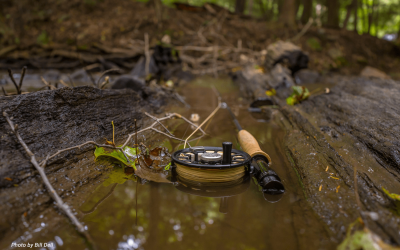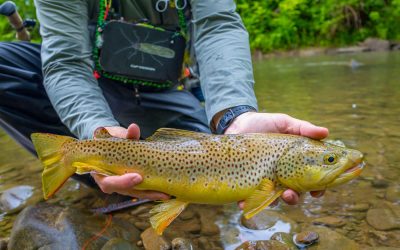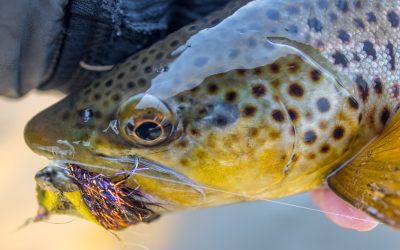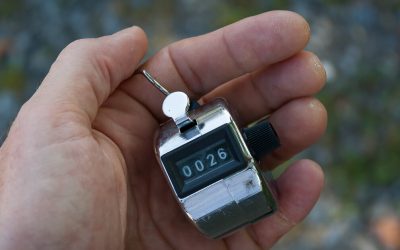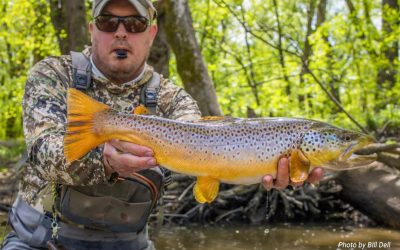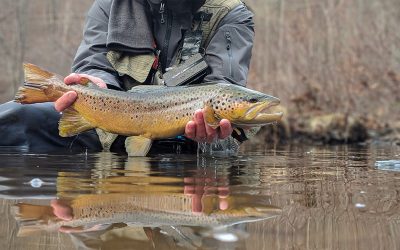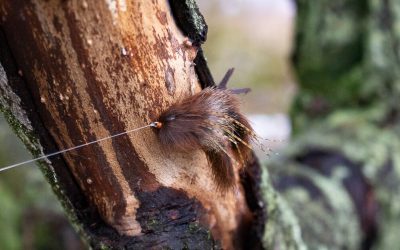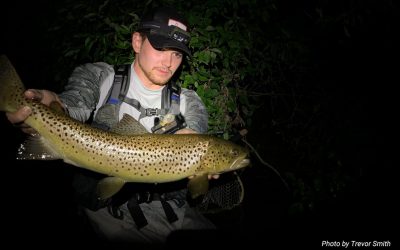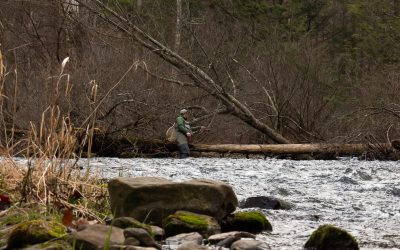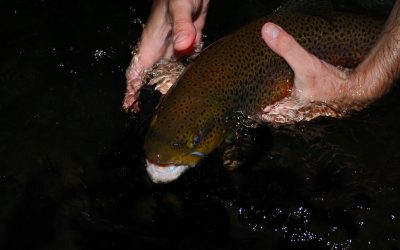ARTICLES
Enjoy the Day
TROUTBITTEN
Troutbitten is built on words. These ideas, these stories, tips and tactics are the roots of a tree that has grown branches.
Troutbitten reads more like a book than a blog. So settle in and find something to read.
Find the category links at the top of every article and the tags at the bottom, because those lead to the archive pages for the topic.
Also within these articles, all text in orange leads to supporting content. Finally, use the search page to find what interests you most.
Thank you for your support through the years.
ALL ARTICLES
Learning To Lead Nymphs On A Tight Line System
Our skill for leading the nymphs through a good drift and aiming for perfection is what puts trout in the net more predictably than any other approach.
PODCAST: The Ethical Angler — What Does That Mean? — S13, Ep3
In this podcast episode, the Troutbitten crew holds a philosophical discussion about ethics in fishing. It’s not a list of concrete examples or rules. It’s an interesting, thought provoking conversation.
The Hop Mend (with VIDEO)
We mend to prevent tension on the dry fly or the indicator. All flies could drift drag free in the current if not for tension from the attached leader. So it’s our job to eliminate or at least limit that tension on the tippet and to the fly.
This Hop Mend is an arch. It’s a steep and quick half-oval. It’s a fast motion up, over and down with the fly rod. It’s powerful and swift, but not overdone . . .
STORIES
Dry Flies In the Patagonia Wind
An account of our last and favorite day in Patagonia . . . We walked the banks and waded through it all — a new slate for memories, a new proving ground for tactics.
Forgiving Flies
This is one of the most amazing times to be on the water. Fishing through a snowstorm rekindles memories, ingrained from the novelty of tracking flies and fly line through the optical mystery of falling snow.
. . . This morning, I’m leaning on my favorite set of forgiving flies — just a handful of patterns I’ve noticed that our notoriously picky trout are more willing to move for and eat. These are patterns that draw attention and perhaps curiosity, but also don’t cause many refusals.
It’s Not Luck
The willingness to meet luck wherever it stands, to accept what comes and fish regardless, is the fundamental attribute of die hard anglers, regardless of their region or the species they chase. We fish because we can, because we’re alive, willing and able, and because we mean to beat bad luck just as we did the last time it showed up.
TACTICS
Troutbitten Shop Summer Sale ’24 — All Leaders, Hats, Stickers and Two New Leader Designs
The Troutbitten Shop Summer Sale ’24 is here, with all leaders, hats and stickers back in stock, along with two new leader designs.
VIDEO: Mono Rig Mods — All the Adjustment for a Versatile, Hybrid System
My friends and I don’t go fishing with our mind set on a certain tactic. We let the trout make those decisions, and we’re ready for anything. The Troutbitten Standard Mono Rig is the perfect tool for such an approach.
. . . It’s a versatile tool. It’s a hybrid system. And to maximize those options, simple adjustments are necessary. This video shows those adjustments in detail . . .
Fish and Film — One Morning For Versatility (VIDEO)
Fishing is a story . . . On a cool morning in August, I visited a favorite stretch of Class A water, with no plan but to see what the trout wanted to eat. In a few hours of fishing for wild trout, I fooled fish with nymphs, dry flies and streamers. This versatile approach is not only enjoyable, it’s often necessary. Because meeting trout on their own terms is the only way to make the most of a river. Cover water. Find feeding fish. Test theories . . . every day.
NYMPHING
VIDEO: The Golden Ratio of Nymphing
One rod length over and two rod lengths up. That’s the Golden Ratio. That’s the baseline, and it’s where trust in our drift begins. There are surely moments and situations that call for something different. But a good tight line style starts here, within the Golden Ratio of nymphing . . .
PODCAST: Critical Nymphing Concepts #6 — Line On the Water — S10, Ep6
This episode is about tension and slack. It’s about how we manage fly lines and leaders on the water while nymphing. My friend, Austin Dando, joins me to walk through the tight line advantage of keeping line off the water and what happens when we give that up. Fishing greater distances often requires laying line on the water, and how we manage that line, how we plan for it, makes all the difference between a great drift and a poor one . . .
Hi-Vis Leader Material for Mono Rigs
The performance between Hi-Vis monofilaments varies widely. Here are the properties I want most, and here are my favorite lines.
There are many options for hi-vis mono, but my preferences are specific. And for so long, I couldn’t find anything that checked all the boxes . . . until now.
STREAMERS
Streamer Presentations — Let Them Eat It
“Let them eat it. Don’t take it away from them.” I’ve burned that simple message in my brain. For many years, I focused obsessively on the motion I would give to a streamer, I now focus equally on where and when I will pause it.
Attract them with motion. Then let them eat it. Streamer fishing for trout really is that simple. But the variations within the framework are where artistry arises . . .
Streamer Presentations — Your First Move
Streamer anglers will tell you that most of their hits happen within the first few seconds or strips. Trout see the fly enter, and their decision whether to attack, chase or ignore your fly is often determined by your first move after entry.
. . . Trout don’t miss much in their field of vision, and they surely notice anything the size of a streamer landing in their zone. Therefore, what that fly does next either entices, dissuades or spooks the fish . . .
Q&A: Streamers — Sinking Line or Tight Line?
The sinking line does a few presentations very well. And a tight line streamer rig can do many things well. While the sinking line approach gains me more distance and longer retrieves, the tight line system is great for a targeted approach, with more casting and shorter retrieves.
Tight line systems provide direct contact and direct control, where sinking line systems put a weighted fly line in between me and the streamer. Two different styles.
There are many things to consider, but start with this: What is the water type? And what are your goals?
ANGLER TYPES IN PROFILE
Angler Types in Profile: The Numbers Guy
I could barely make out the shape of a man fishing through the fog. A dense cloud hung over the water that morning, wrapping everything in a white shroud, and I felt water enter my lungs with every breath. Eventually, the rising sun punched holes through the white sheet, further decreasing visibility with mirrored reflections. Then within the next half hour, solar warmth provided enough heat to turn the big cloud into vapor. And as the fog dissipated over the river, Mike’s thin form came into view.
He moved like a machine in rhythm. He zigged and zagged across the pocket water, casting and catching, netting and releasing one trout after another. The machine paused to catch its breath only when Mike spent thirty seconds tying a knot. From my perspective downstream, it was perfection . . .
BIG TROUT
What does it take to catch a big trout?
For many years, I believed that it takes nothing special to catch a big trout. I argued with friends about this over beers, during baseball games, on drives to the river and through text messages at 1:00 am. My contention was always that big trout don’t require anything extraordinary to seal the deal. They need a quality drift, a good presentation, and if they are hungry they will eat it. I frequently pushed back against the notion that big wild trout were caught only with exceptional skill.
So for all who’ve heard me make this argument, I’d like to offer this revision: I still believe that large trout don’t need more than a good presentation. But what is GOOD may actually be pretty special. Meaning, it’s rare to find the skill level necessary to consistently get good drifts and put them over trout (large or small).
Here’s more . . .
Where to find Big Trout | Part Four: The Permanent Structure
Rivers are built from just a few parts. While the sand and soil of a streambed is fluid, the framework — the shape of a river — is directed by roots and rocks. Time and the tenacity of flowing water changes the shape of the hardest rocks, eventually carving granite into a new form, eroding and molding a riverbank toward a new course. And while nothing is eternal in a river or its floodplain, there’s enough permanent structure in a stream — the immovable objects — that good trout take notice. So does the big fish hunter . . .
Fighting Big Fish — How Strong Are Your Tools?
It takes about five minutes to feel the flex of a rod and learn the breaking strength of our chosen tippet. And a simple experiment is all that’s needed. Once you’ve tested both the tippet and the rod’s strength, a new confidence follows. Then, when the fish of your dreams shows up, you are ready.
When you know the maximum pressure available from your fly rod and tippet , you can put more pressure on a trout and bring him in quickly . . .
NIGHT FISHING
Night Fishing for Trout — Fight or Flight
I finally have an honest understanding about what draws me into night fishing. Yes, it’s the fear. And of the serious night anglers I’ve known, it’s the same for all of us. Fear is the crackling spark plug . . .
Tight Line Nymphing — Contact Can Be Felt at the Rod Tip
. . . But Smith had also drawn out of me one thing that I’d never fully put into words before explaining it to him. Namely, that contact is felt as much as it’s seen. While tight line nymphing, I’d told Smith, an advanced angler can feel contact with the nymph on the rod tip. Essentially, you could very well fish with your eyes closed. And because Smith was skeptical, I’d suggested some after-dark tight line nymphing as a way to prove to my friend that he could feel that contact just as well as anyone . . .
Night Fishing for Trout: Know your water, and make a plan
You have no business night fishing an area that you can’t visualize.
Close your eyes. Now imagine the spot you plan to night fish. Think about the first cast. Where are the rocks, tree limbs and logs? How much of the gravel bar is exposed at this water level? How swift does the current break around the undercut bank? If you guessed at any of these things, if you were uncertain at any pass, then you will struggle at night.
Questions and uncertainties are amplified after dark. So I go into my night fishing hours with a plan — much more than any day trip. The program might change if the light, water or feeding conditions suggest a new strategy. But having an outline holds me together on a dark river . . .
MORE
With over 900 articles on Troubitten, there’s much more to explore than what you see above.
Use the site menu to navigate through articles collected in series. Click the categories and tags to find the archives pages for each topic.
Everything in orange, sitewide, is a link to more supporting content.
And use the search page to find what you’re looking for.
Also Subscribe to Troutbitten and follow along. (Yes, it’s free.)
Cheers, friends.


